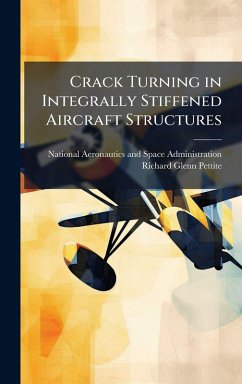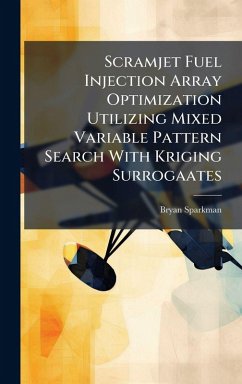
An Investigation of Starting Techniques for Inward Turning Inlets at Flight Speeds Below the On-Design Mach Number
Versandkostenfrei!
Versandfertig in über 4 Wochen
28,99 €
inkl. MwSt.
Weitere Ausgaben:

PAYBACK Punkte
14 °P sammeln!
The purpose of this study was to create and investigate starting techniques aimed at allowing complex, three dimensional inward turning inlets to start by swallowing the shock wave associated with un-started inlets. The designed techniques were rooted in supersonic diffuser theory and the Kantrowitz limit, and the techniques attempted to alleviate the over contraction that occurs in inward turning inlets at flight speeds below the on-design Mach number. Five cases, three geometries at two flow conditions, and the base non-modified inlet at the two different flow conditions were generated and a...
The purpose of this study was to create and investigate starting techniques aimed at allowing complex, three dimensional inward turning inlets to start by swallowing the shock wave associated with un-started inlets. The designed techniques were rooted in supersonic diffuser theory and the Kantrowitz limit, and the techniques attempted to alleviate the over contraction that occurs in inward turning inlets at flight speeds below the on-design Mach number. Five cases, three geometries at two flow conditions, and the base non-modified inlet at the two different flow conditions were generated and all were numerically simulated using a commercially produced numerical solver, CFD++. The simulations were computed using the inviscid Navier-Stokes/Euler equations in a steady state analysis to generate the shock wave, followed by a transient analysis to allow the shock to move in time. The results of the investigation show that all five cases proved to be sub-optimal as none were able to successfully swallow the shock during the transient simulation. However, the results from this analysis indicate that the slit case, designs that extended the initial spill areas of the inlet, appear to hold the most potential in the creation of a successful starting technique. The slit case holds the most potential because the slit Mach 2.7 case was just as effective as the slot Mach 2.7 case, yet the slit area was half the size as the designed slots. Future research should attempt to characterize the effects of slits at different Mach numbers and at various complexities of inlet and slit geometry. This work has been selected by scholars as being culturally important, and is part of the knowledge base of civilization as we know it. This work was reproduced from the original artifact, and remains as true to the original work as possible. Therefore, you will see the original copyright references, library stamps (as most of these works have been housed in our most important libraries around the world), and other notations in the work. This work is in the public domain in the United States of America, and possibly other nations. Within the United States, you may freely copy and distribute this work, as no entity (individual or corporate) has a copyright on the body of the work. As a reproduction of a historical artifact, this work may contain missing or blurred pages, poor pictures, errant marks, etc. Scholars believe, and we concur, that this work is important enough to be preserved, reproduced, and made generally available to the public. We appreciate your support of the preservation process, and thank you for being an important part of keeping this knowledge alive and relevant.












